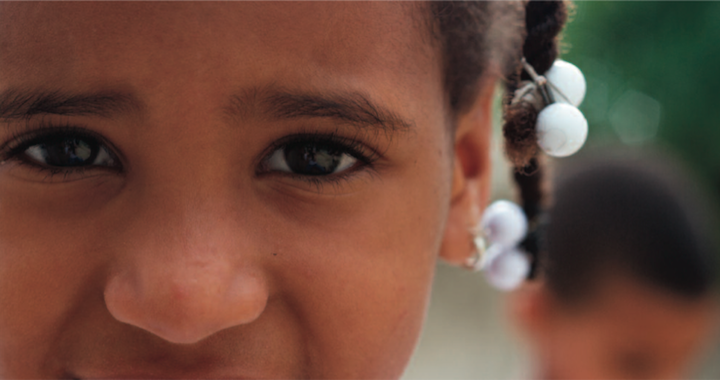World Vision in Latin America and the Caribbean (LAC) just released a new publication titled Child Protection Systems in Latin America and the Caribbean: A National and Community Level Study across 10 Countries.
This publication presents the regional trends observed across 10 countries (Brazil, Bolivia, Dominican Republic, Ecuador, El Salvador, Guatemala, Haiti, Honduras, Nicaragua, and Peru) where World Vision carried out a comprehensive analysis, from 2011 to 2012, of child protection trends and roots causes, and strengths and weaknesses in child protection systems using the ADAPT methodology (Analysis, Design, and Planning Tool).
This study is especially significant because it marks the first time that the main protagonists identifying problems, causes, strengths and weaknesses, are children themselves. The firsthand experiences of children were taken as the starting point for research and analysis.
Latin America and Caribbean ranks among the most violent regions in the world, and violence disproportionately affects children, adolescents, and youth. Data from the World Report on Violence against Children (2006) shows that Latin America and the Caribbean have the highest rates of homicides among 15-17 years old. An estimated 6 million children in Latin America and the Caribbean suffer severe abuse, including abandonment, and around 80, 000 children under 18 years die each year of parental abuse (IIN, 1998).
Related: Let’s Stop Empowering and Start Inspiring
In the Latin America and Caribbean (LAC) region, World Vision has elected to prioritize our efforts to contribute to the prevention of abuse, neglect, exploitation, and all other forms of violence against children, which is expressed in our Regional Cause – “protected children promoting a more just and secure society.”
Based on evidence gathered by international and regional institutions, World Vision already had an idea of the alarming levels of violence against children in the LAC region. However, the scope of such studies is limited, and data on violence against children is not systematically collected or updated regularly by governments, resulting in major information gaps on the realities experienced by children in their homes and communities.
The studies carried out by World Vision over the past 3 years have bettered our understanding of the root causes and most pressing child protection concerns, and they urge us to act.
What were the main child protection issues identified?
- Physical and psychological abuse, primarily in the home and school and often by parents and guardians closest to children
- Sexual assault and abuse
- Neglect and abandonment
- Child labor
- Child trafficking for sexual and labor exploitation
- Teen pregnancy as a result of sexual abuse
- Domestic violence
What are the immediate and root causes of these problems?
- High levels of poverty and unemployment
- Attitudes of machismo and aggression against women and girls
- Lack of parent education and knowledge
- Drug and alcohol consumption
- Death or absence of a parent or both parents
- High levels of migration, family separation or dissolution
- Discrimination based on gender and ethnicity, and against rural populations
- Violent contexts, existence of organized crime, and influence of gangs
- Lack of opportunities for children and youth
- Lack of spaces for recreation, cultural and artistic expression, sports, etc. to discover talents, grow and develop, and open new possibilities for the future
What else did we learn?
- Home and school are the primary sites of violence against children.
- There is a lack of knowledge among the population about rights, resources, and services related to child protection and of laws to protect children when they do exist.
- There is a lack of state capacity and collaboration between actors to ensure protection of children and their rights.
- There exists little or no spending on services related to child protection, which impedes application of laws and effective public policies at the local level.
Despite these major challenges, there are many opportunities to improve child protection, and this study helped World Vision to clarify our priorities to best contribute to strengthening child protection systems in the LAC region.
The results of this study are clear and they urge us to act, working with both civil society and government actors to strengthen and implement political and legislative frameworks and transform social norms that devalue children and their development.
Related: I Have Some Bad Habits
We hope that this publication will be a call to action that inspires others outside of World Vision to join us in building a mass movement to protect all children, especially the most vulnerable and marginalized, so that every child may reach their God-given potential and enjoy life in all its fullness.
*******
World Vision in Latin America and the Caribbean works in 14 countries: Bolivia, Brazil, Chile, Costa Rica, Colombia, Ecuador, El Salvador, Guatemala, Haiti, Honduras, Mexico, Nicaragua, Peru, and the Dominican Republic, directly impacting 4, 500 of some of the most marginalized communities and indirectly impacting 2.5 million children, adolescents, and youth.
By 2016 World Vision in Latin America and the Caribbean aims to directly empower and mobilize 3.7 million children, adolescents, and youth, and contribute to the well-being of 14.5 million through advocacy and mobilization efforts to achieve systemic reforms and social transformation.
For more information, please visit http://www.wvi.org/region/latin-america-and-caribbean and our youth engagement platform at http://juventudenalyc.worldvisionyouth.org

